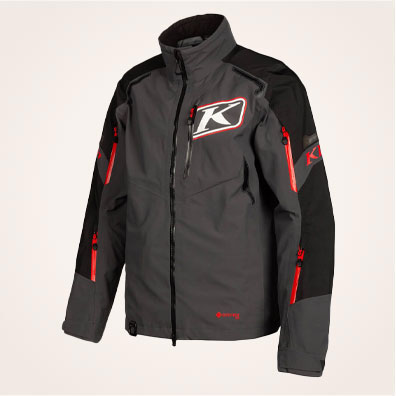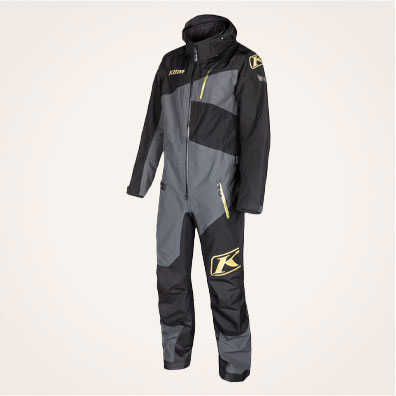Snow
Conquering the Cold: A Rider's Guide to Motorcycle Snow Gear
Hey, all you intrepid riders who don't let a little snow slow down your adventures! When the temperature drops and the snow starts to fall, it doesn’t mean the end of your riding season. It just means you need to gear up differently. Motorcycle snow gear is your best ally against the frosty elements, designed not just to keep you warm, but safe and in control of your bike. Ready to gear up? Let’s dive into the essentials of motorcycle snow gear.
Understanding the Importance of Specialized Snow Gear
Riding a motorcycle in snow poses unique challenges, not least of which is staying warm. But it’s not just about combating the cold; it’s about ensuring your gear offers the flexibility, protection, and visibility you need under snowy conditions.
Protection and Visibility: Why They Matter
In snowy conditions, visibility decreases, and the risk of slips and falls increases. Snow gear for motorcyclists is designed with these factors in mind, integrating enhanced protective features and materials that help make the rider visible in a winter landscape.
Essential Features of Motorcycle Snow Gear
Choosing the right snow gear involves more than opting for the thickest jacket you can find.
1. Thermal Insulation
Effective insulation is key to maintaining body warmth. Look for gear with built-in layers of thermal materials that trap heat while allowing moisture to escape.
2. Waterproofing
To combat snow and ice, your outer layer must be completely waterproof, not just water-resistant. Materials like Gore-Tex can provide breathability along with reliable waterproofing.
3. Reinforced Protection
Areas prone to impact, such as elbows, knees, and backs, should have reinforced padding or armor. This is crucial for protecting against injuries from falls on icy roads.
Selecting the Right Snow Gear: A Step-by-Step Guide
From head to toe, each piece of your outfit needs to support your ride through cold, slippery conditions.
Helmets: Full Coverage with Anti-Fog
Choose a full-face helmet with an anti-fog visor to maintain clear vision. Helmets with built-in heating elements around the face shield can also be a good choice.
Jackets and Pants: Layered and Durable
Opt for jackets and pants specifically designed for winter riding. These should offer a combination of waterproof and thermal layers, along with high-visibility colors or reflective materials.
Gloves and Boots: Waterproof and Insulated
Your extremities are the first to suffer in cold weather, so proper gloves and boots are essential.
Insulated Gloves with Grip
Choose gloves that are thick enough to insulate, but flexible enough to allow easy manipulation of your bike’s controls. Waterproofing is a must.
Boots: Sturdy and Non-Slip
Boots should be waterproof with a rugged, non-slip sole to handle icy surfaces. Insulation is also crucial to keep your feet warm on cold rides.
Layering Strategies for Extreme Temperatures
Layering is the best approach to maintaining core body heat. Here’s how to layer smartly.
Base Layer: Moisture-Wicking Fabrics
Start with a snug base layer that wicks away sweat. This keeps your skin dry and warm.
Mid Layer: Insulating Fabrics
Add a mid-layer of fleece or wool for insulation, which can be adjusted based on the temperature.
Maintaining and Storing Your Motorcycle Snow Gear
To ensure your gear stays in peak condition, proper maintenance is key.
Cleaning and Waterproofing
Clean your gear according to the manufacturer's instructions and reapply waterproofing treatments as necessary.
Advanced Features in Motorcycle Snow Gear
With advancements in materials and technology, snow gear offers more protection and comfort than ever.
Built-in Heating Elements
Some high-end gear includes electric heating elements that can be connected to your bike’s battery to provide consistent warmth.
Choosing Gear That Fits Your Riding Style
Your snow gear should match the type of riding you do, whether it’s long-distance touring or short commutes.
Touring vs. Commuting
Touring gear tends to be heavier and more robust, while commuting gear might prioritize flexibility and ease of movement.
Frequently Asked Questions About Snow Gear
Question: Can I use regular motorcycle gear in the snow?
A: While regular gear provides some protection, snow-specific gear offers additional insulation and waterproofing essential for cold, wet conditions.
Question: How much does good quality motorcycle snow gear cost?
A: Quality snow gear can be an investment, with prices ranging from moderate to high-end, depending on the features and brand.
Question: Is it safe to ride a motorcycle in the snow?
A: Riding in snow can be safe if you are properly equipped and experienced. Always assess road conditions and your ability to control your bike in such environments.
Question: How do I keep my snow gear from fogging up?
A: Look for gear with built-in anti-fog features or treat your visors and goggles with anti-fog spray to maintain clear visibility.
Question: What is the best way to increase visibility while riding in snow?
A: Wear high-visibility or reflective gear, use additional bike lights, and maintain a cautious speed to ensure you are seen by other road users.
There you have it—everything you need to stay warm, dry, and safe while riding your motorcycle in the snow. Don’t let a little cold weather keep you off your bike. Gear up properly, and enjoy the ride!













